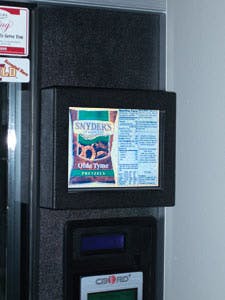Operators attending the NAMA National Expo in Chicago last month learned there are bills in Congress that include language governing calorie disclosure in vending machines. As explained in the news story on page 6, Ned Monroe, NAMA’s senior vice president of government affairs, said such a requirement is part of the health care reform legislation, and it stands a good chance of passing this year.
While a bill is likely to pass in the near future, it will not take effect for at least another year, giving the industry time to comply.
Operators can’t be expected to welcome this news, but in the long term, the rule could help improve the vending industry’s image. Negative consumer perception has been the industry’s biggest challenge for many years, and any progress on this front should be met with an open mind.
WE MUST CHANGE OUR IMAGE
Consumer research has shown repeatedly that vending machines are viewed as purveyors of unhealthy products, a perception that most operators believe to be false.
Point-of-sale signage that makes consumers more aware of what products are actually in the machines will help change this misperception.
More importantly, the calorie posting rule, according to NAMA’s
Monroe, will give reason for operators to embrace point-of-sale video screens, which could engage consumers with vending in a new and exciting way.
While it was not known at this writing how operators will be required to post calorie information, Monroe says digital displays on machines that allow a consumer to view nutrition information will exempt the operator from the calorie posting requirement. In other words, video screens will be a way for operators to address the requirement.
Given the fact that digital video screen technology has already been developed and vending machines can be retrofitted at a reasonable cost, compliance will be feasible for most operators. Vendors Exchange International Inc. exhibited video screens at the expo and demonstrated how nutrition data can be added with a standard SD card. The company has a nutrition data base that it plans to update regularly.
The Kraft Vending & OCS/Crane/Samsung “diji touch” machine that was also displayed at the expo is another machine with a video screen that provides nutrition data, in addition to other types of information.
LET’S ADDRESS CONSUMER NEEDS
The video screens make it easy for a consumer to review and compare nutrition information — in a way they can’t in other retail formats.
One operator told me he is gearing up to use the video screens as a selling tool, and he expects the new calorie labeling rule will make his case for video screens all the more convincing.
Technology isn’t a silver bullet. It requires planning, education, training, and financial investment. It also holds great promise for our industry to become more relevant to consumers.








